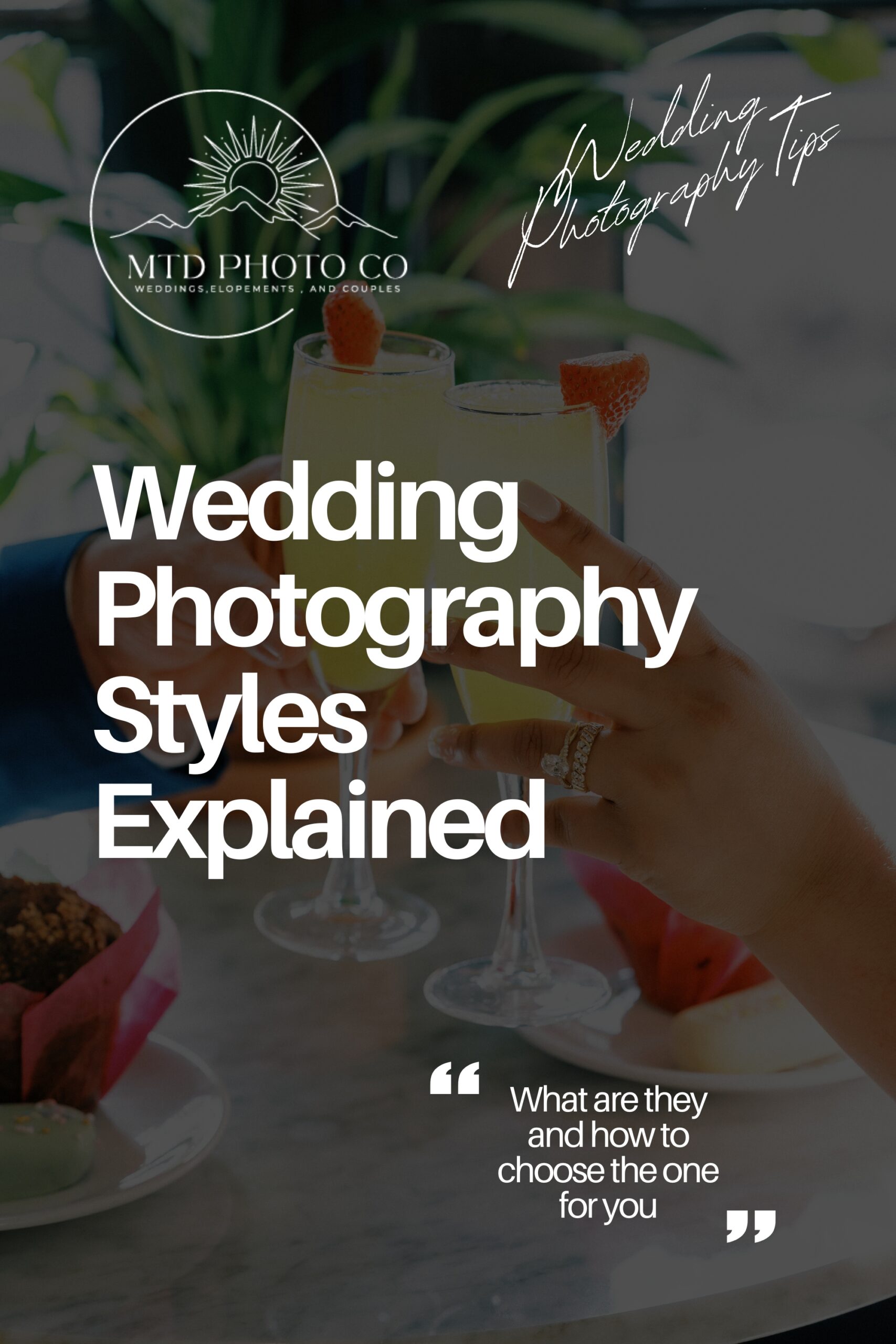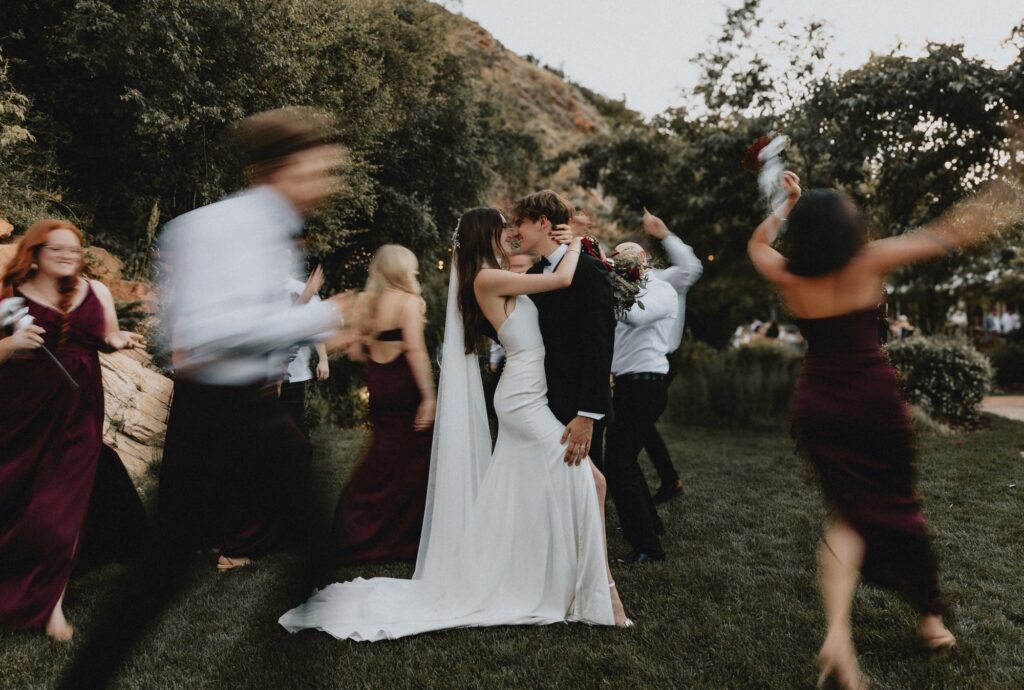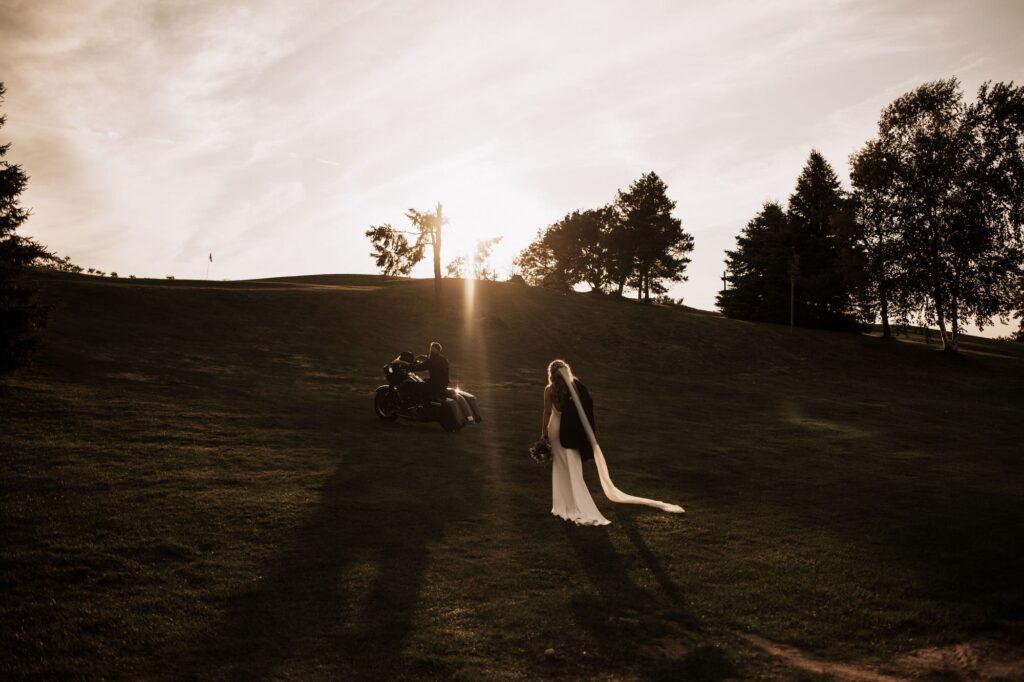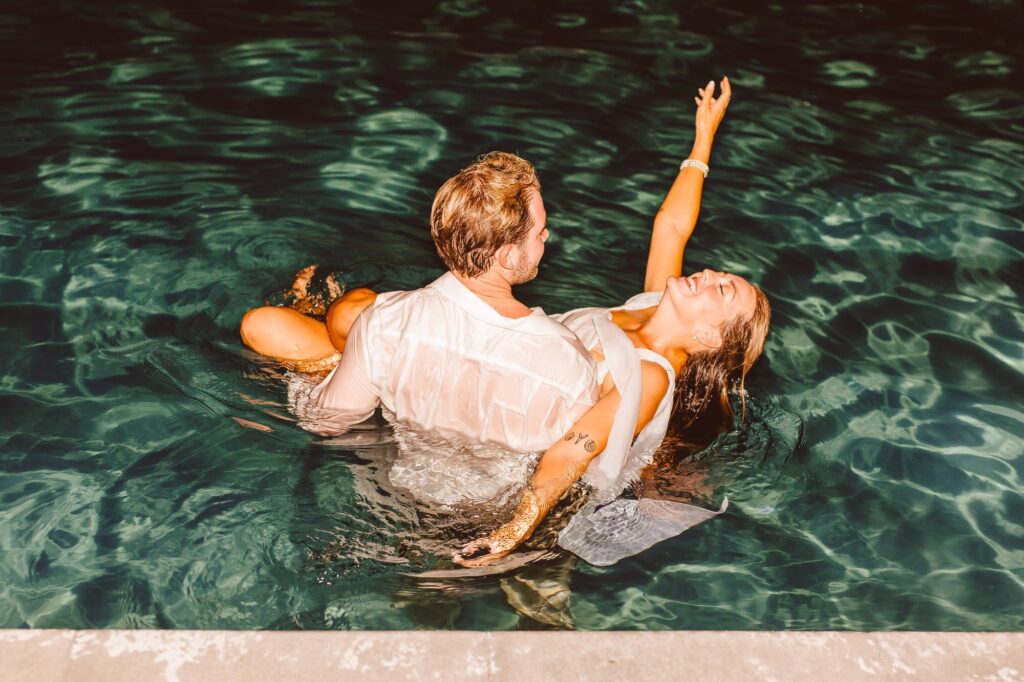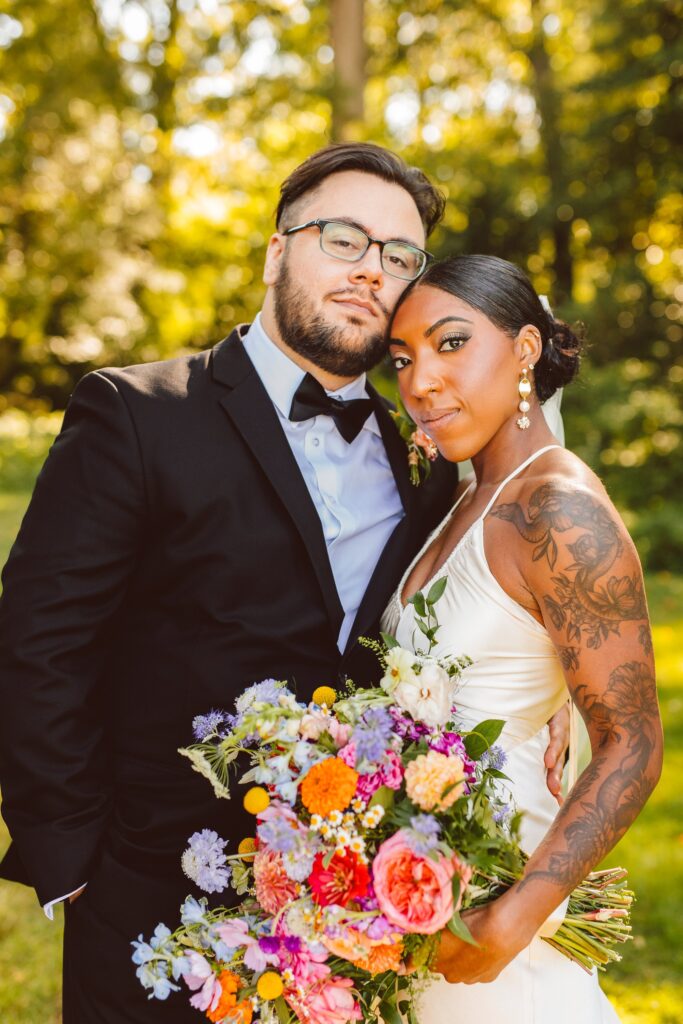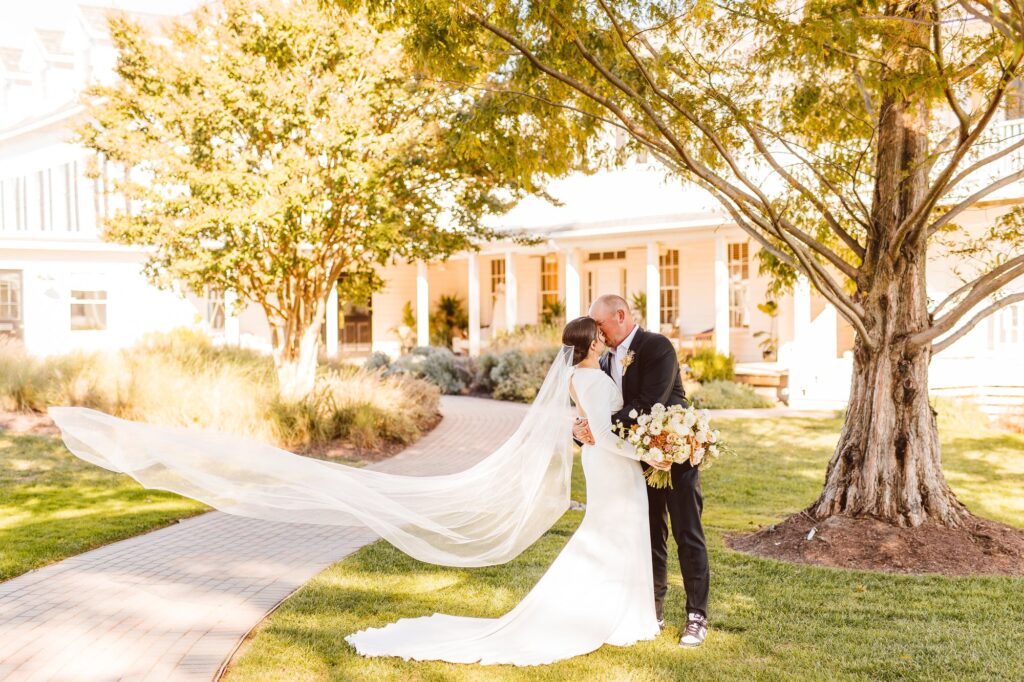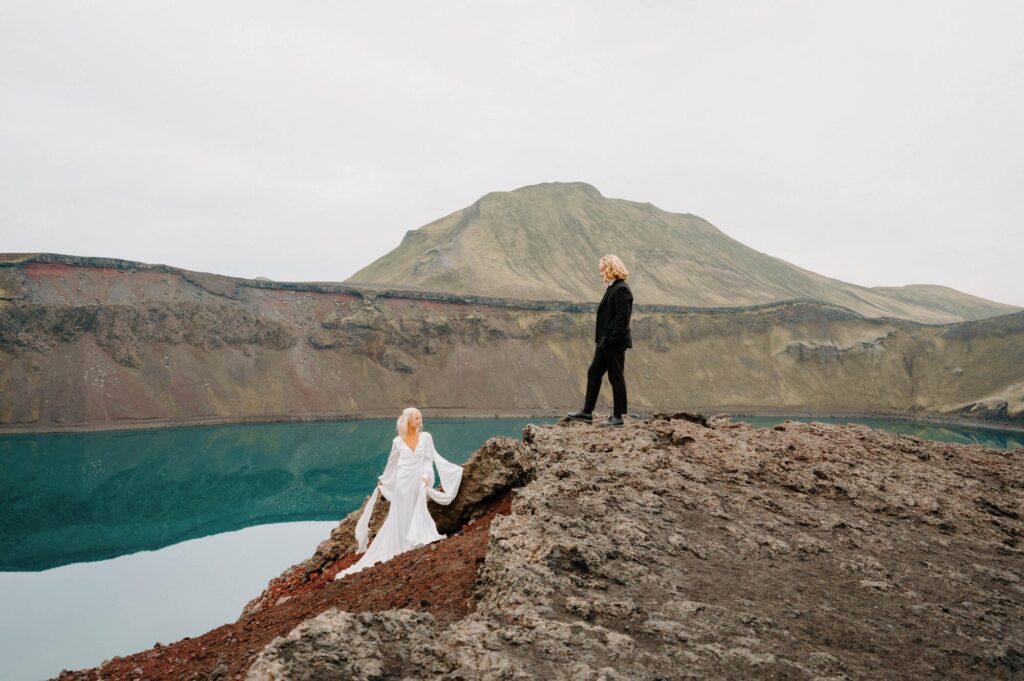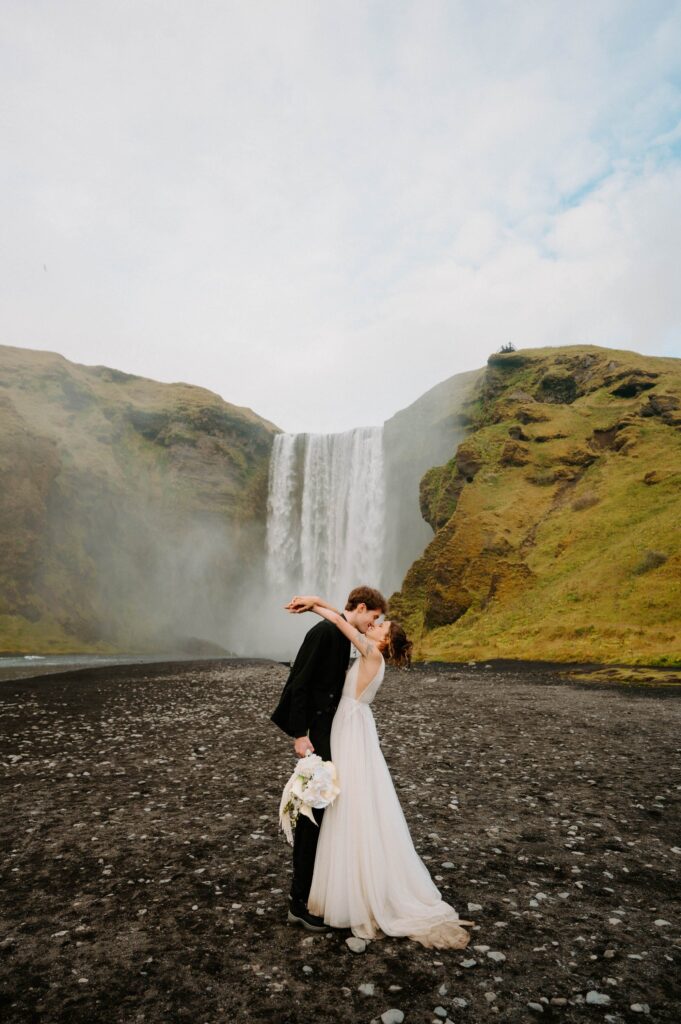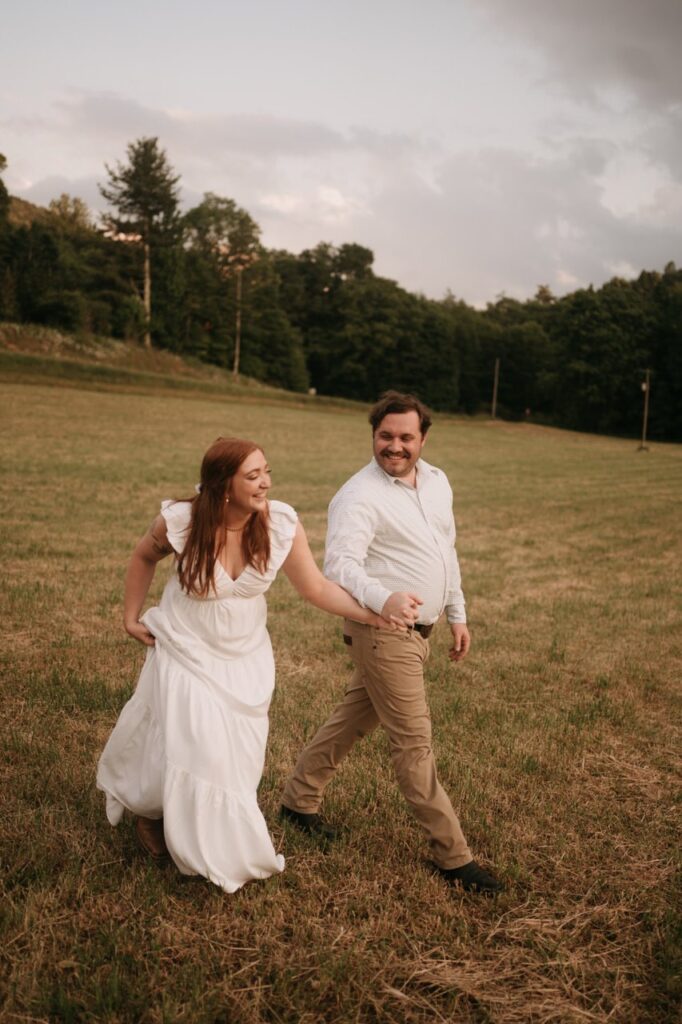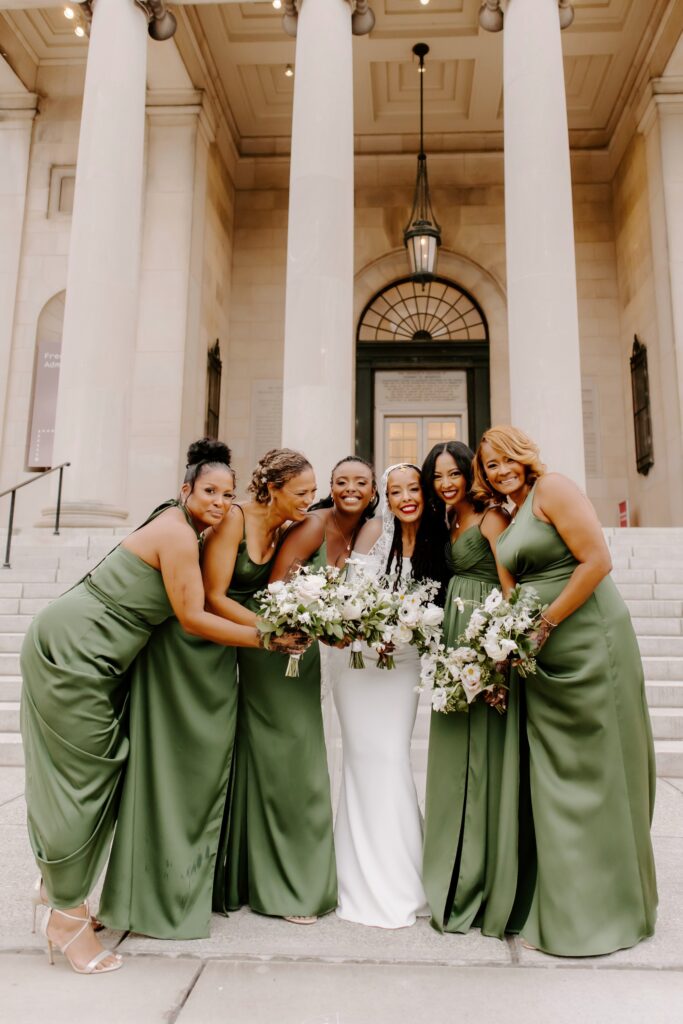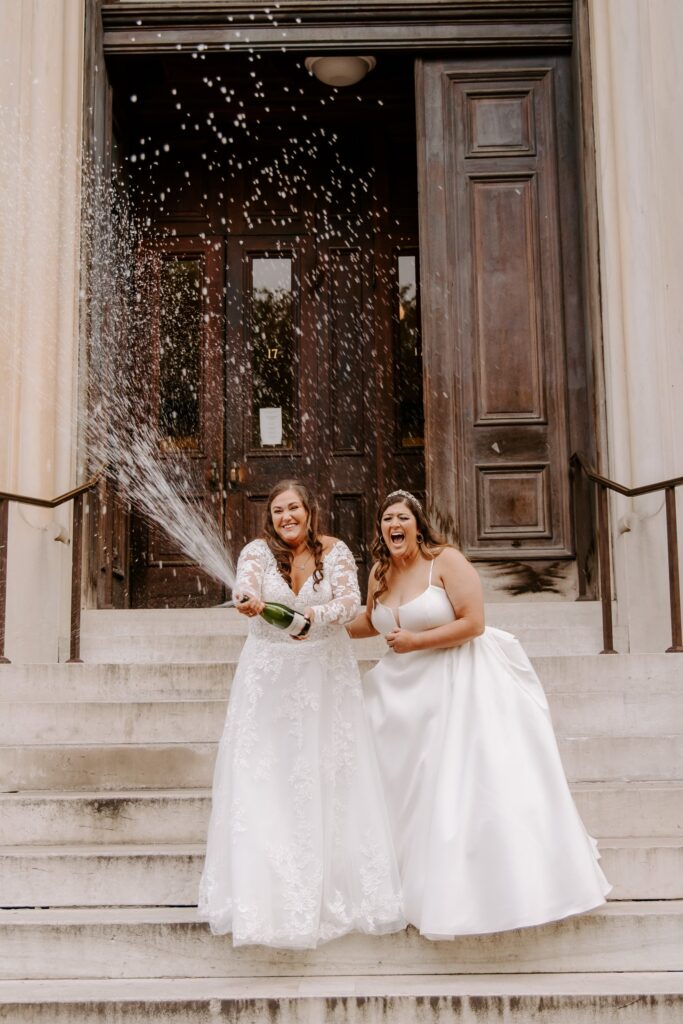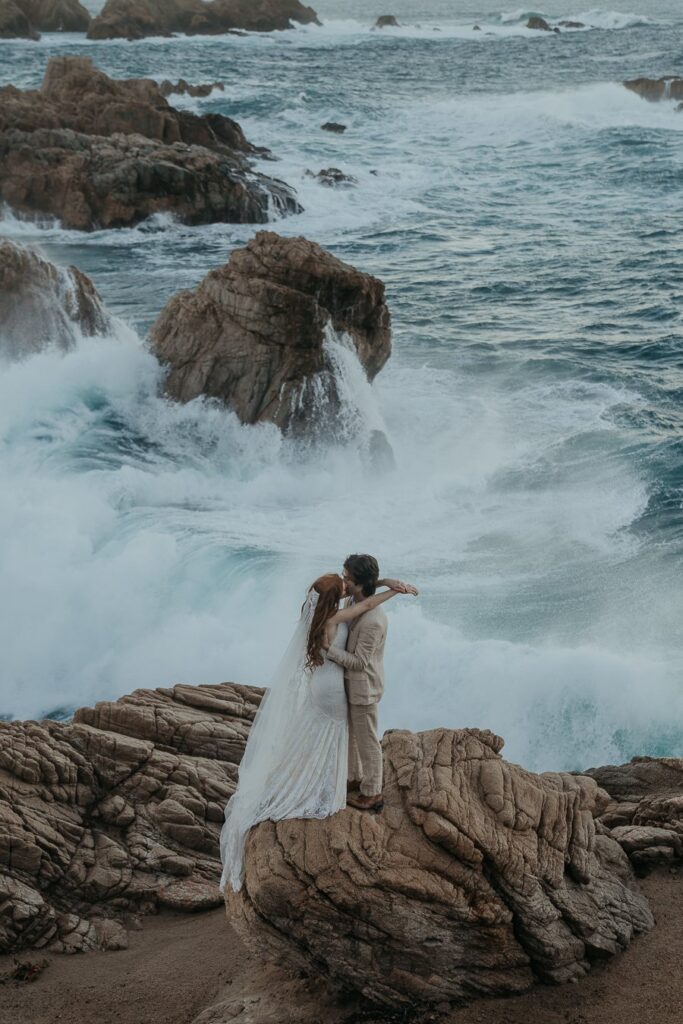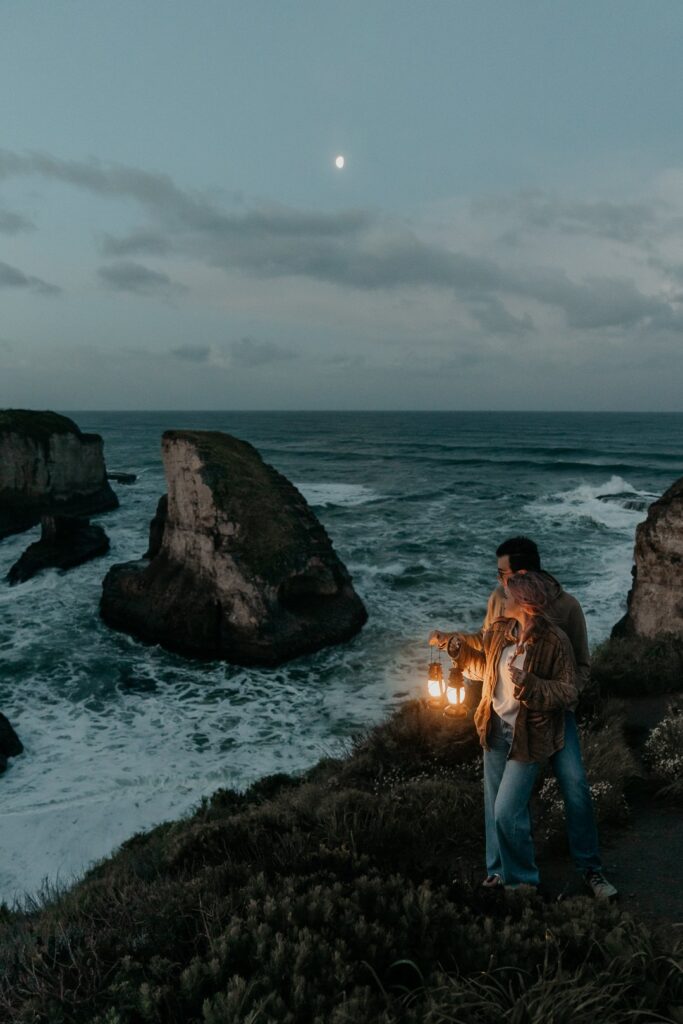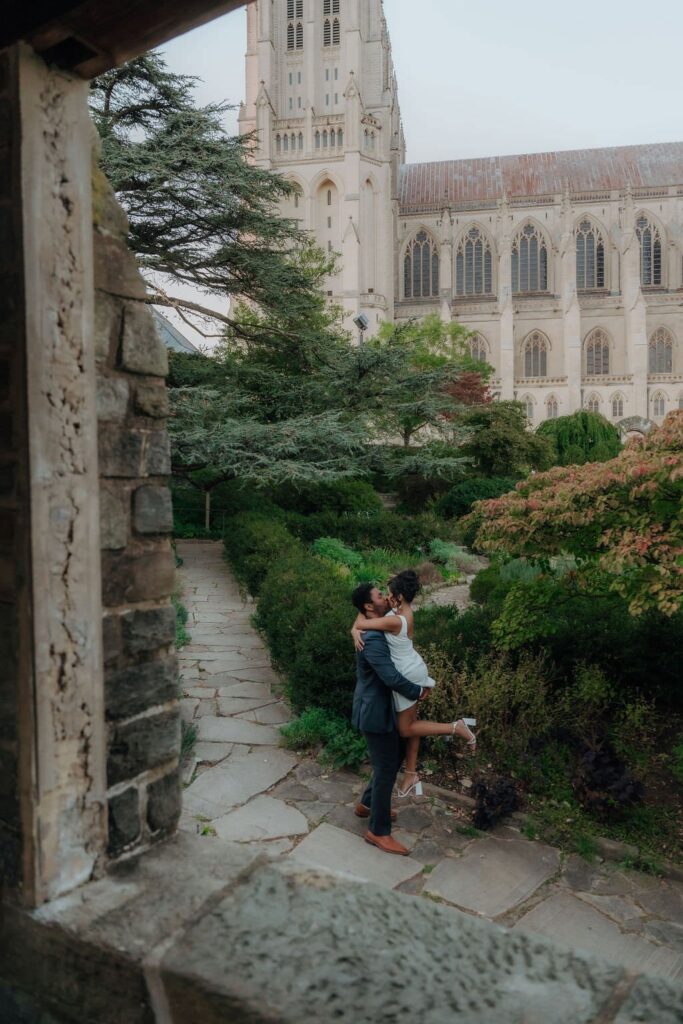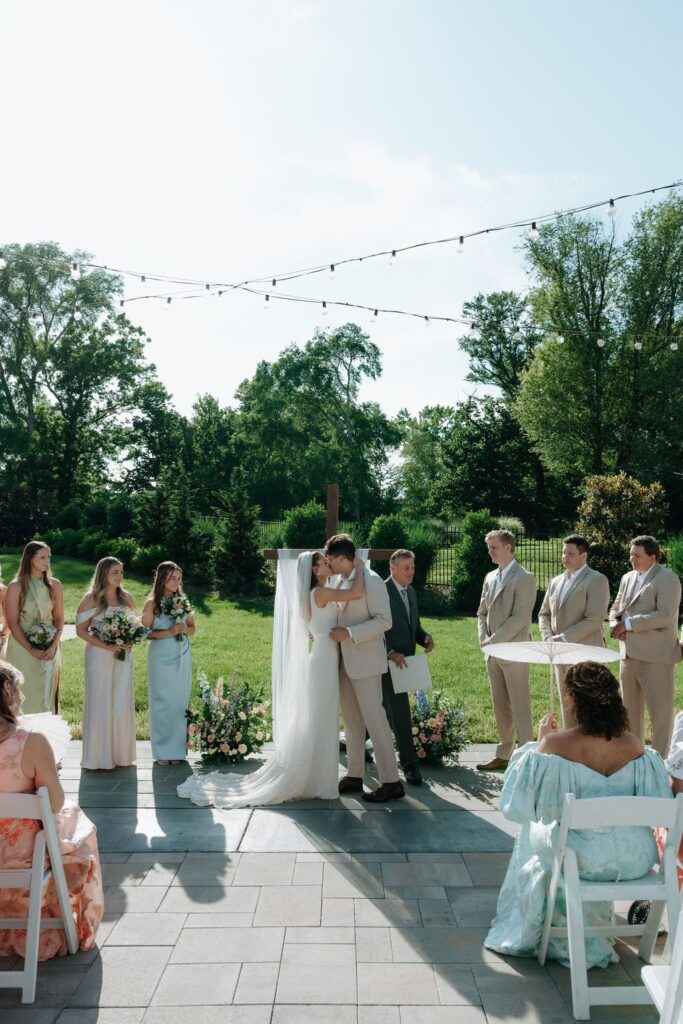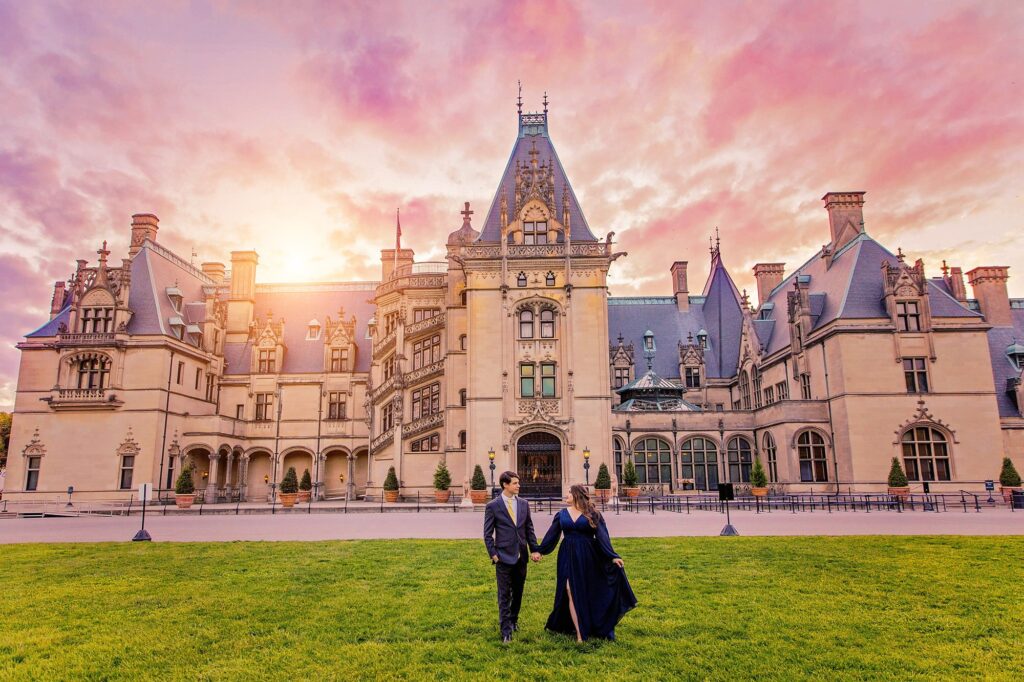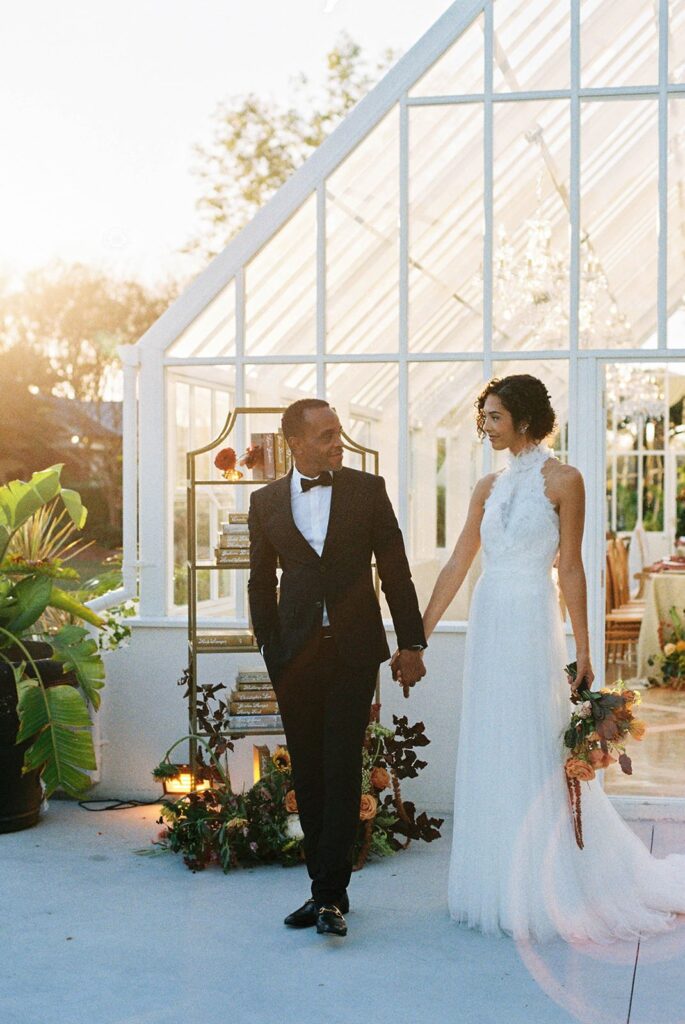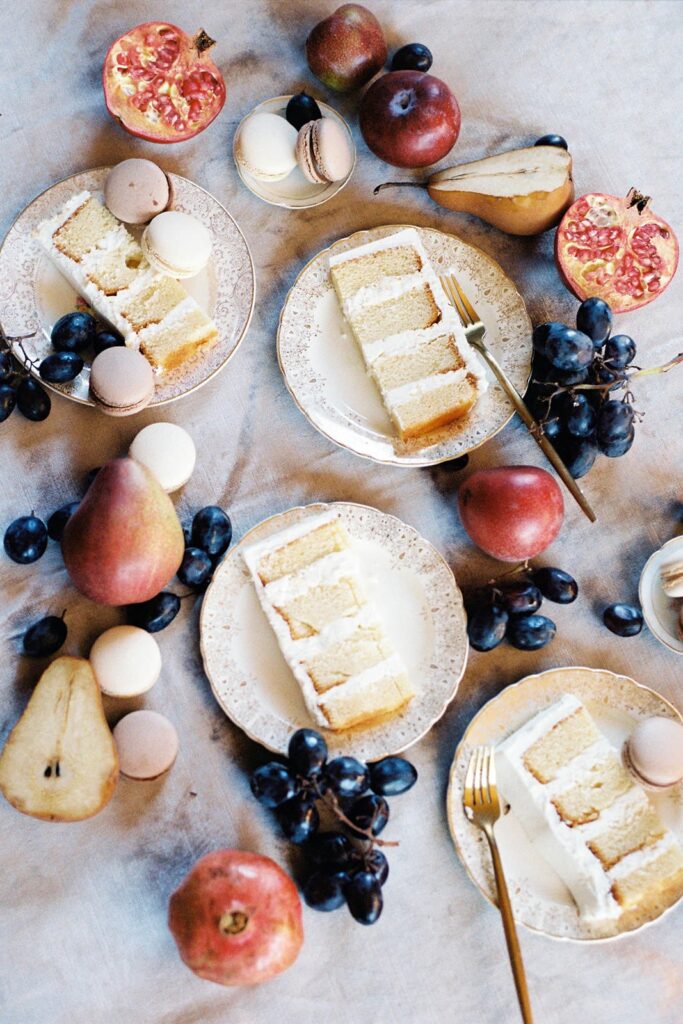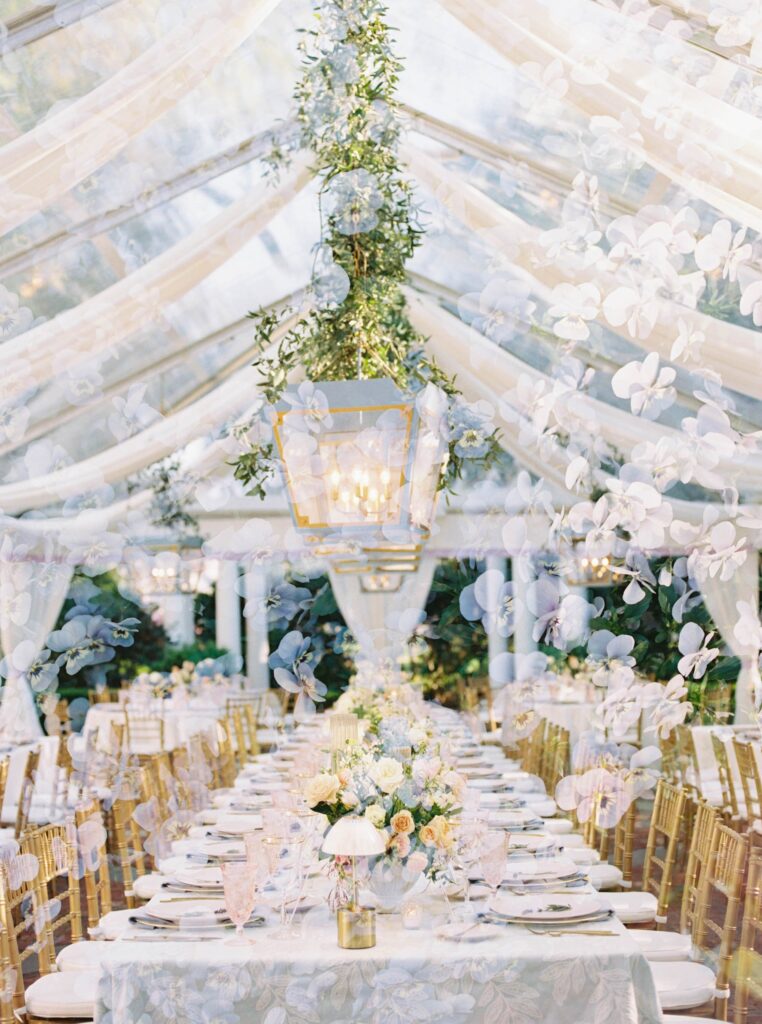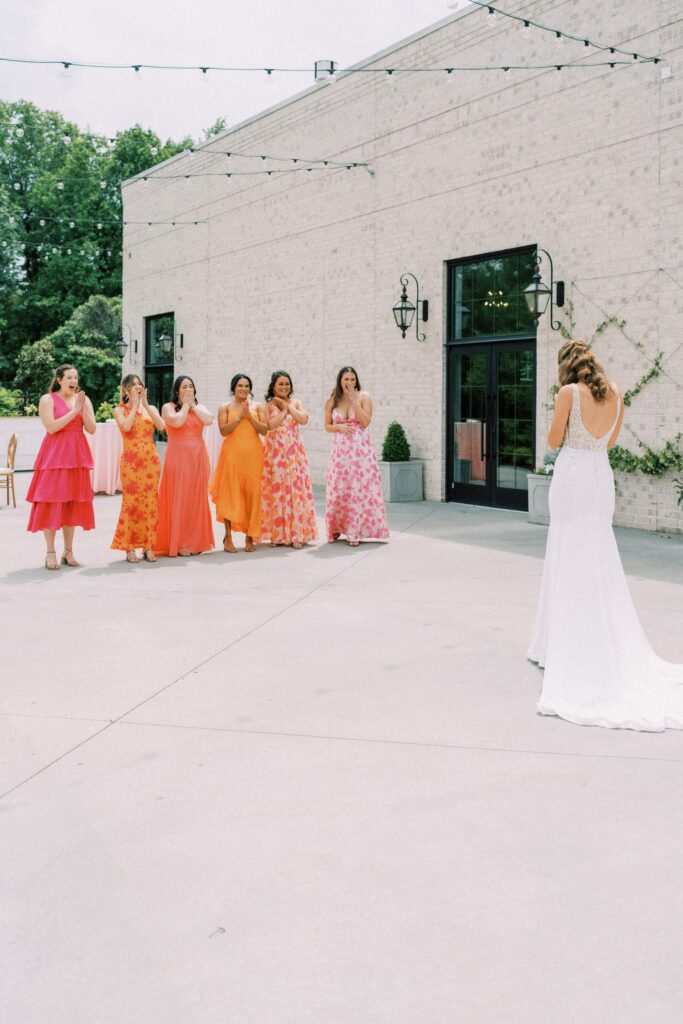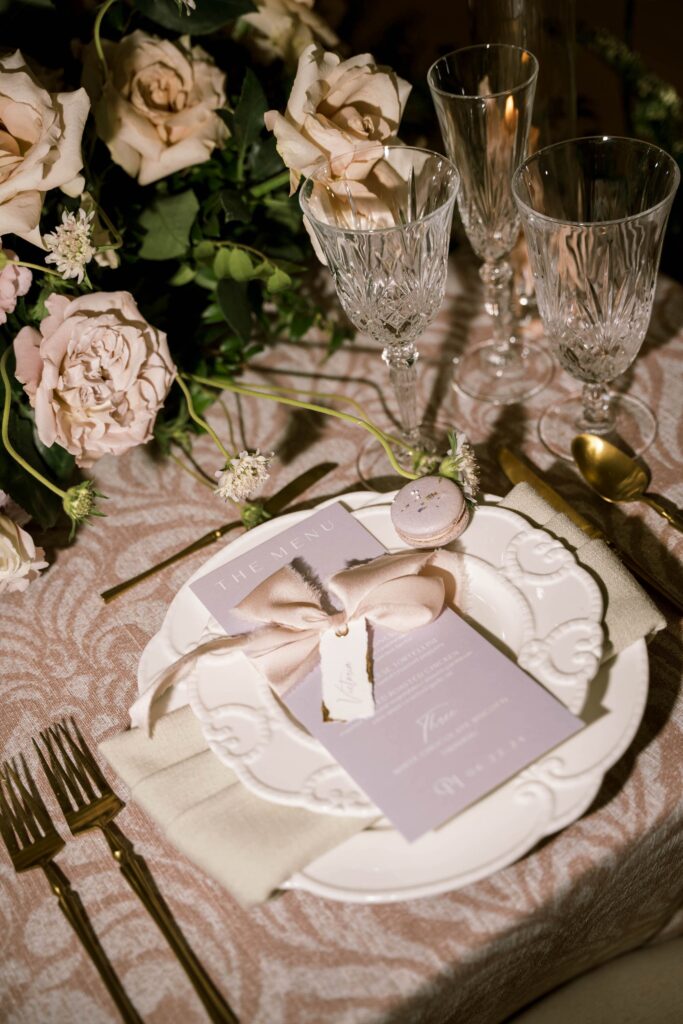1/29/25
When I talk to couples, the question of, “What style of photography are you looking for?” often comes up.
The responses I get tend to fall into two categories:
“I’m not sure” -or- “I don’t know how to describe what I like.”
When searching for a wedding photographer, most couples will notice the terms used describe photography styles but don’t fully understand what they mean. In this guide, I’ll break down the different styles of photography to help you articulate what you’re looking for and/or find a style you love. By the end, I hope I helped make your search for the perfect photographer a little easier and more informed!
When reviewing a photographer’s portfolio, there are two key things to consider: their editing style and their shooting style.
• Editing Style refers to how the photographer edits colors, tones, and light in their images. It’s about the mood and aesthetic they create after the photos are taken.
• Shooting Style is how the photographer interacts with their subjects, the environment, and captures moments. This could mean directing and posing or capturing candid moments as they naturally unfold.
Most photographers will specialize in one unique editing style, but use a combination of shooting styles depending on the couple’s energy, preferences, and events of the day.
It’s also important to think about the overall feel of your wedding when choosing a photographer. Think of it like pairing a great wine with dinner; the right photographer will complement and enhance the atmosphere and details you’ve worked so hard to create.
Be sure to examine both styles and how they align with the vision you have for your wedding.
Lastly, be sure to ask photographers for full galleries to get a comprehensive view of their work. This will give you a clear understanding of how their style translates across different lighting conditions and environments. I’ve also written a guide on What to Consider When Looking at Full Galleries, which is a great resource if you’re talking to multiple photographers with a style you love!
Jump to a Style
Editing Styles: How the photos are edited
~ Light and Airy
~ Vibrant and True to Life
~ Dark and Moody/Grungy
Shooting Styles: How the photos are taken
~Fine Art
~Editorial
~Documentary / Photojournalistic
~Traditional
~Lifestyle
Editing Styles – Colors and Tones
Light and Airy
Usually characterized by soft, luminous lighting and a pastel-like color palette. This editing style emphasizes light tones, with whites and neutrals appearing clean and soft, while colors remain muted yet true to life. Lifted highlights give images a glowing quality, while softened shadows maintain a balanced and gentle contrast. The overall look is fresh, timeless, and ethereal, evoking an elegant and cheerful mood. This style is for couples seeking a classic, romantic aesthetic for their wedding photos.
Photo Cred: Laura Ashley Photography



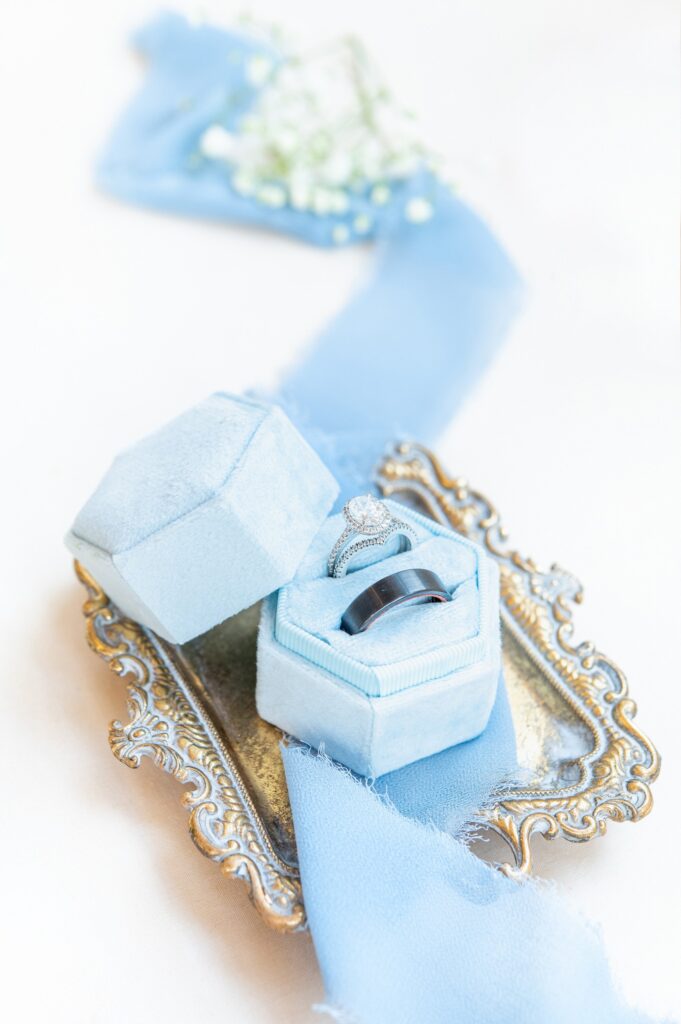
Photo Cred: Amy Dost Photography




Vibrant and True to Life
My personal bread and butter. This is a style that emphasizes bold colors, sharp details, and a realistic yet elevated depiction of the day. This approach enhances the natural hues and lighting of the scene, ensuring colors pop without feeling oversaturated or unnatural. Whites are crisp, blacks are rich, and every photo is captured with clarity, creating a lively and energetic feel. Skin tones are carefully balanced to look natural and flattering, making the images feel authentic and timeless. The result is a collection of photos that are full of life, capturing the joy and atmosphere of the wedding day.
Photo Cred: MTD Photo Co. Maria Davis


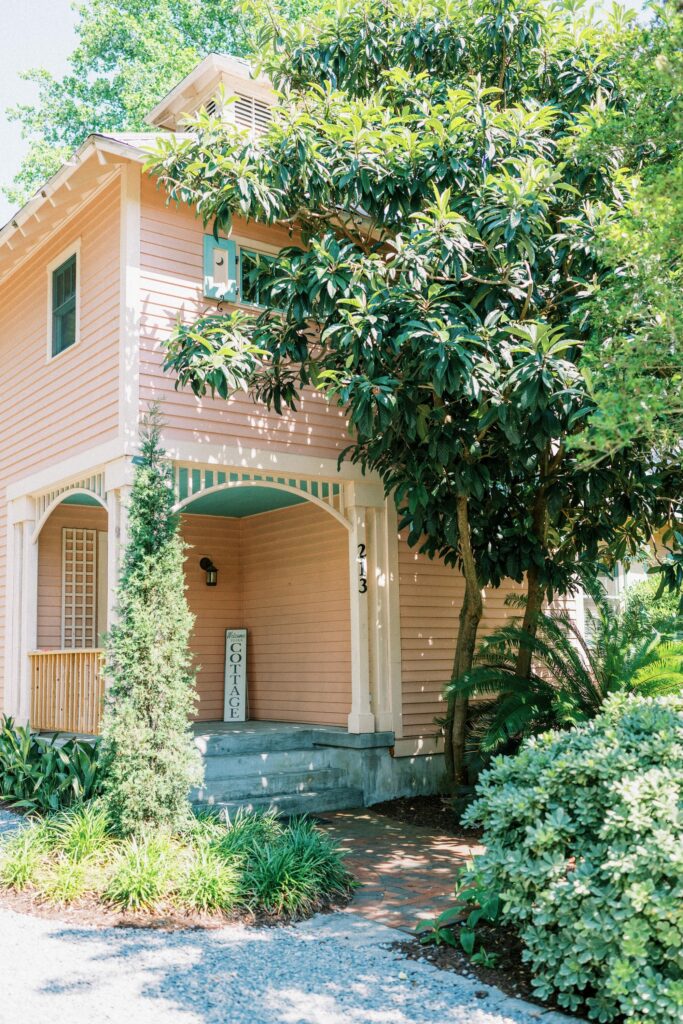
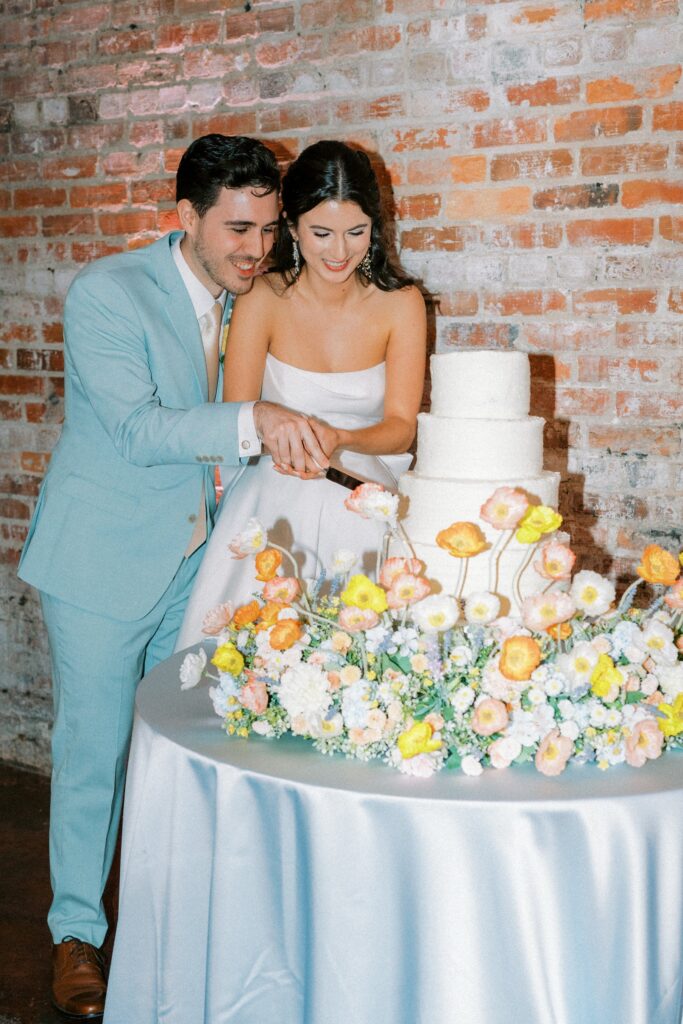



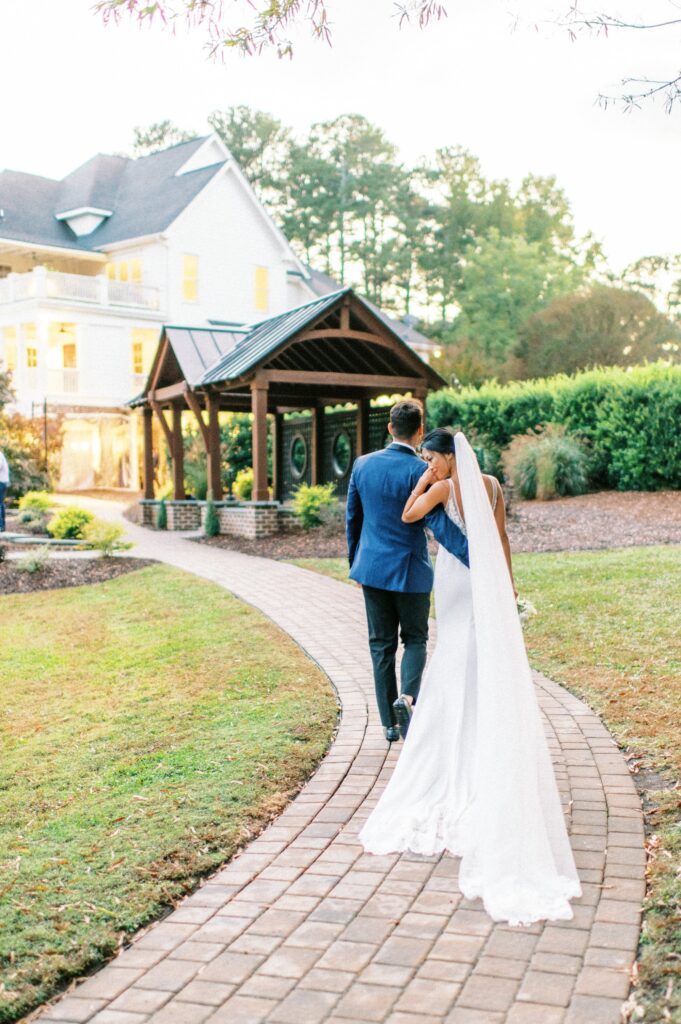
Dark and Moody/Grungy
This is a more dramatic editing style that emphasizes deep shadows, rich tones, and an overall cinematic feel. Colors can appear a little more desaturated or muted, often with an emphasis on earthy or jewel tones, creating a sense of intimacy and depth. Highlights are softened, and shadows are pronounced to add dimension and emotion to the images. This is perfect for couples who want their wedding photos to feel unique, edgy, and atmospheric.
Photo Cred: Datura Photo Jules
Photo Cred: Wandering Media Co. Megan and KP
Warm – Yellow and Orange
Warm editing is a popular style that highlights golden tones and cozy hues. Enhancing yellows and oranges for a glowing golden hour feel all day and night. Skin tones are enriched, and the overall mood feels sunny and, well, warm. Depending on the photographer, this style can range from subtle to pronounced and come in both bright and dark variations. Perfect for couples seeking heartfelt, radiant, and inviting wedding photos.
Photo Cred: Brooke Michelle Photo
Photo Cred: Danielle Nicole Photography
Earthy – Greens and Browns
Earthy is an editing style inspired by nature’s organic tones. It emphasizes greens, browns, and soft neutrals to create a grounded and natural aesthetic. Highlights can be softened and shadows deepened, giving images a calm, timeless feel. This style is ideal for outdoor weddings, rustic venues, or couples who love the outdoors and want their photos to feel organic, understated, and natural.
Photo Cred: Forest and Fog Collective Cat Car
Photo Cred: Alicia Wiley Photography
Cool – Blues and Greens
Cool editing styles focus on enhancing tones of blue, gray, and other cool hues. Whites typically take on an icy undertone, while shadows can be deepened to give the photos a moody, dusky feel. This style evokes a serene, ethereal vibe and is frequently found in the adventure elopement community. Cool editing is perfect for winter weddings, minimalist designs, or couples who want a clean, dramatic, and striking look in their photos.
Photo Cred: Kasey Mantiply Photography
Photo Cred: The Post Wedding Photographer Perscilla
High Contrast
High-contrast wedding photography is bold and dramatic, with a focus on stark differences between light and dark elements in the image. This style brings out vivid details, sharp textures, and rich tones, creating a dynamic and striking visual effect. Highlights are bright and crisp, while shadows are deep and pronounced, adding depth and dimension to every shot. Ideal for couples who want their photos to feel impactful and artistic. This can be combined with any of the above color or brightness styles.
Photo Cred: The Picture of Love Hannah Loder
Photo Cred: Party of Two Photography Kim and Jess
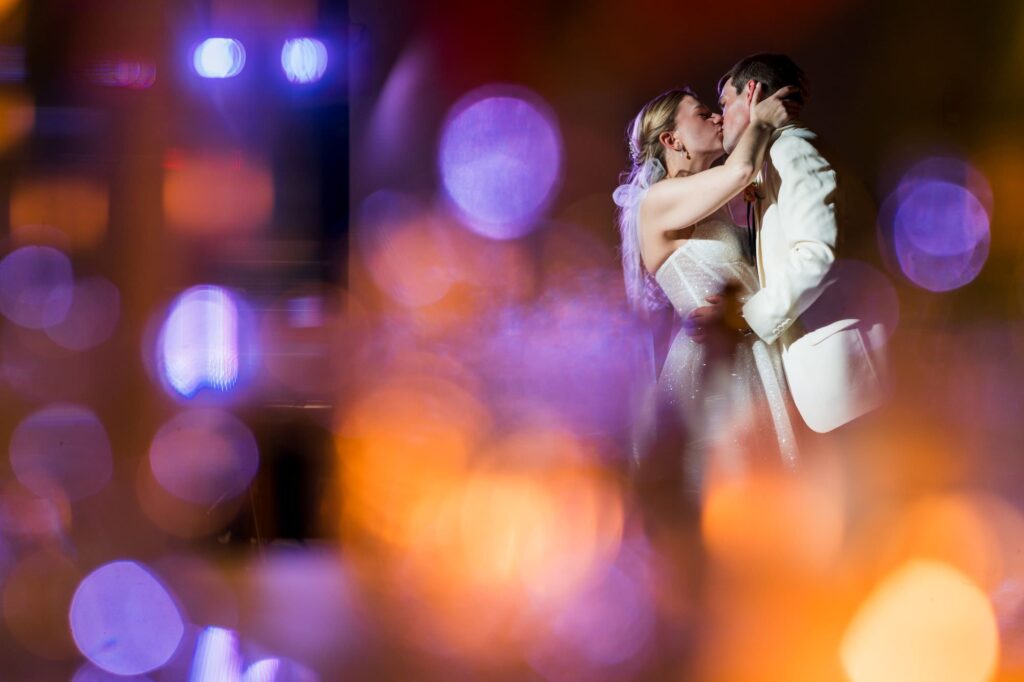
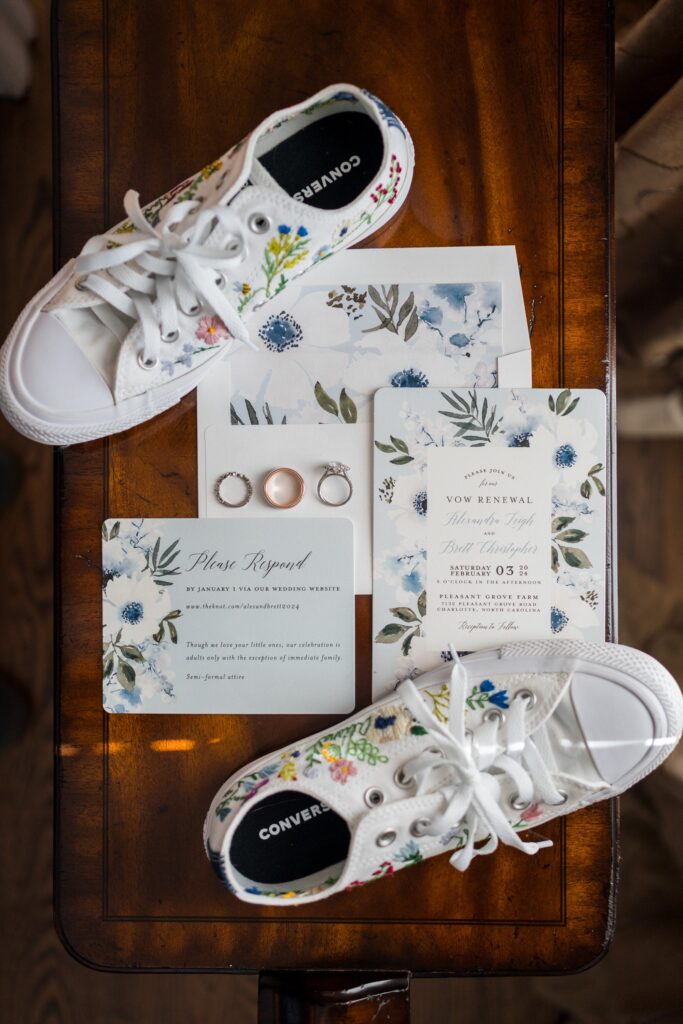

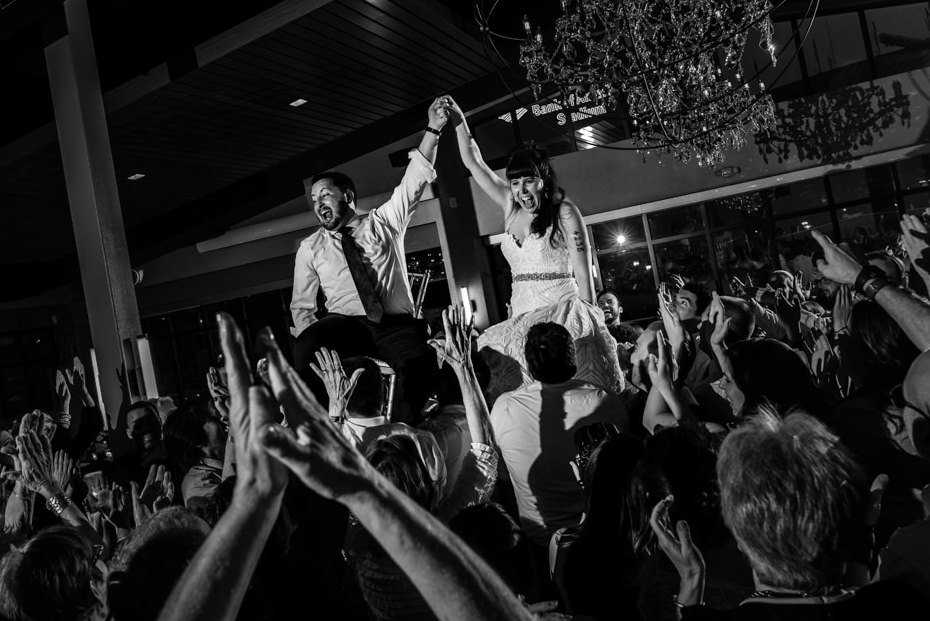
Film and Analog – 35mm and Medium Format
Film and analog photography, my personal favorite, doesn’t adhere to a specific color palette. After the wedding, the way film is developed and scanned significantly shapes its final look. While I can often tell whether a set of photos is film or digital, I still can’t quite put into words what makes film feel so special and hard to replicate. There’s a certain magic to it, like the difference between blasting music in the car vs feeling it surround you at a concert. Imperfections, light leaks, and subtle variations bring character and charm. It’s perfect for couples seeking an artistic, handcrafted touch to their images.
Photo Cred: MTD Photo Co. Maria Davis
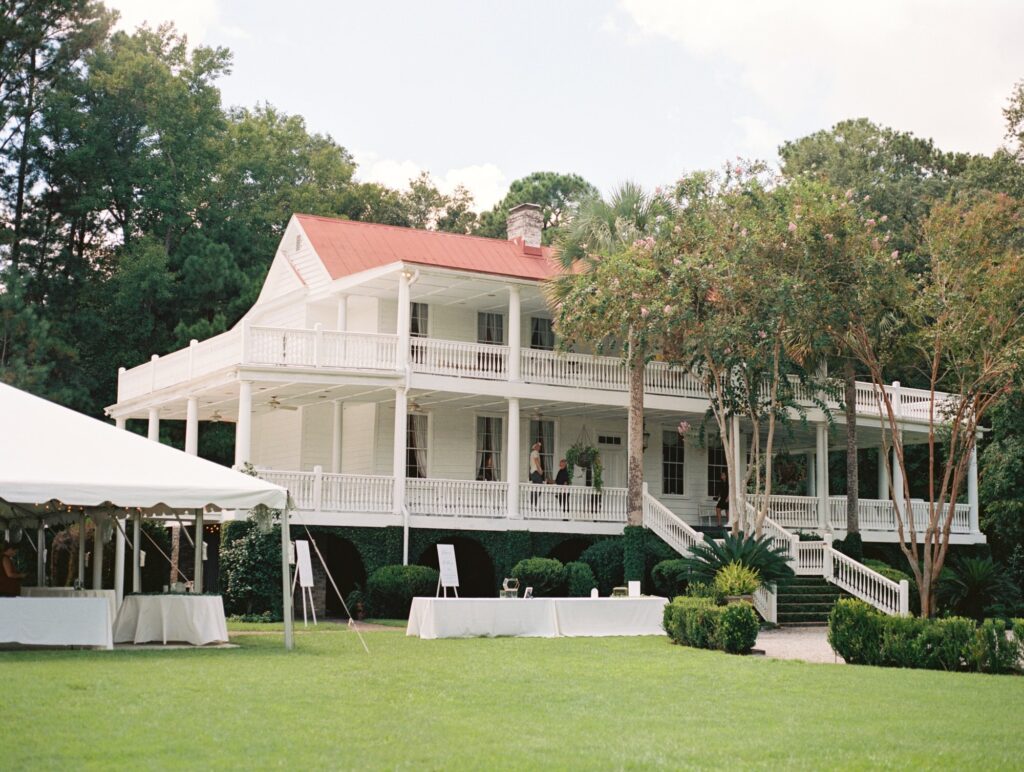



Photo Cred: Abate Photo Giuliana and Lane
Shooting Styles – Client Experience and Methods
When exploring shooting styles, it’s important to note how fluid and open to interpretation these terms can be. The words photographers use to describe their shooting style—photojournalistic, documentary, editorial, and more—are widely used in the industry, but their meanings often shift depending on who you ask. Most photographers utilize multiple styles, resulting in unique approaches that may not align perfectly with one definition. While these terms provide a general framework, it’s equally important to focus on the photographer’s portfolio and how their personal vision resonates with you.
Fine Art
Fine art photography is characterized by the photographer’s intentional and detail-oriented approach — prioritizing quality over quantity to ensure every frame contributes to a cohesive, visually stunning narrative. Many fine art photographers incorporate film into their work, valuing its organic textures and classic aesthetic to enhance the overall artistry. The final photos are polished and artistic, with an emphasis on elegance and beauty, making this style a staple in the luxury wedding industry.
Photo Cred: Alaina Ronquillo Photo
Editorial
Editorial wedding photography, another staple of the luxury industry, is defined by a creative, fashion-forward approach, resulting in images that feel like they belong in the pages of Vogue. Using striking compositions, bold poses, and intentional use of artificial light, this style is dramatic and captivating. Editorial photographers take a more hands-on approach, directing their subjects to craft images with a balance between storytelling and artistry. The final images radiate sophistication and high-fashion allure, making this style a favorite for couples seeking a bold, luxurious aesthetic.
Photo Cred: Kyla Jeanette Photography
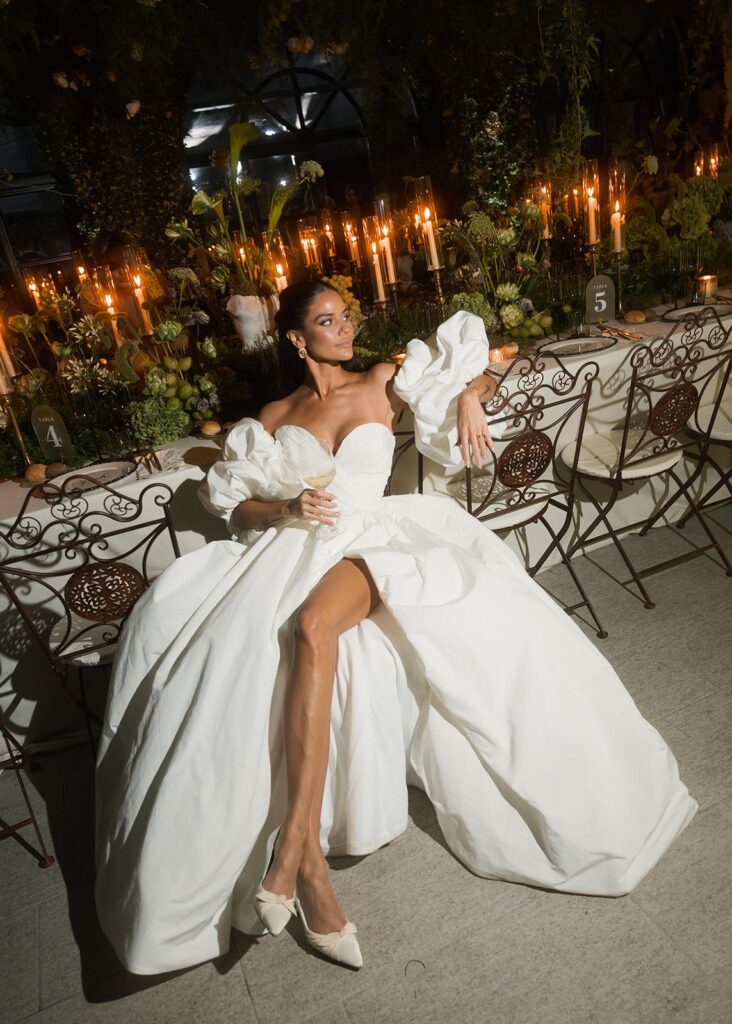





Documentary / Photojournalistic
Probably the most popular wedding photography style today amongst both couples and photographers, and it’s easy to see why. This “fly on the wall” approach prioritizes storytelling by letting raw emotions and unfiltered moments shine. The result is a gallery filled with authentic, heartfelt, and intimate images, capturing the little details and fleeting moments that might otherwise go unnoticed. The visual narrative it creates feels timeless and deeply personal, reflecting the unique story of the couple and their celebration.
Photo Cred: MTD Photo Co. Maria Davis
Traditional
Traditional wedding photography takes a more structured approach, focusing on posed, polished shots of events such as the ceremony and formal portraits. Nearly all photographers incorporate this style for specific parts of the day rather than the entire event. Those who specialize solely in traditional photography may not cover events like getting ready or post-ceremony celebrations. Traditional-only is ideal for couples who want professional documentation of the main events and family but don’t see all-day photography as a priority.
Photo Cred: MTD Photo Co. Maria Davis
Lifestyle
Lifestyle photography is more commonly used for portrait sessions and elopements than large weddings, but still something to look out for if you’re planning either. This style tells a story by capturing couples in familiar settings, whether at home, a favorite date spot, or on an adventurous outing. Using natural light and a relaxed approach, it balances authenticity with aesthetic quality. While not overly posed, photographers provide light direction to encourage genuine interactions. The result is warm, personal images that feel effortless and true to the couple’s relationship.
Photo Cred: MTD Photo Co. Maria Davis
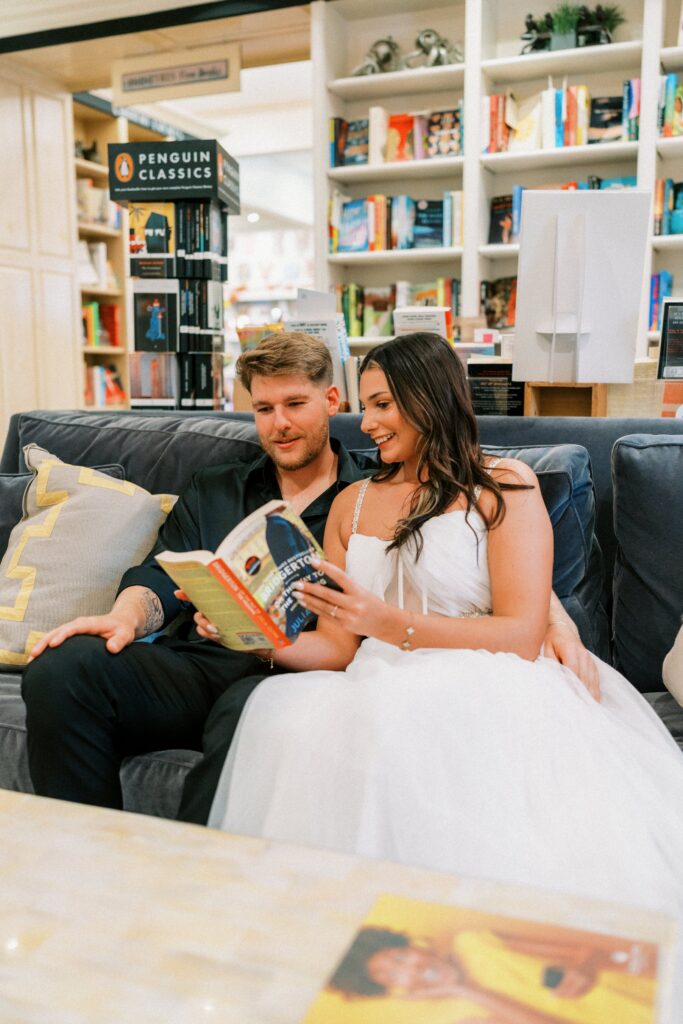


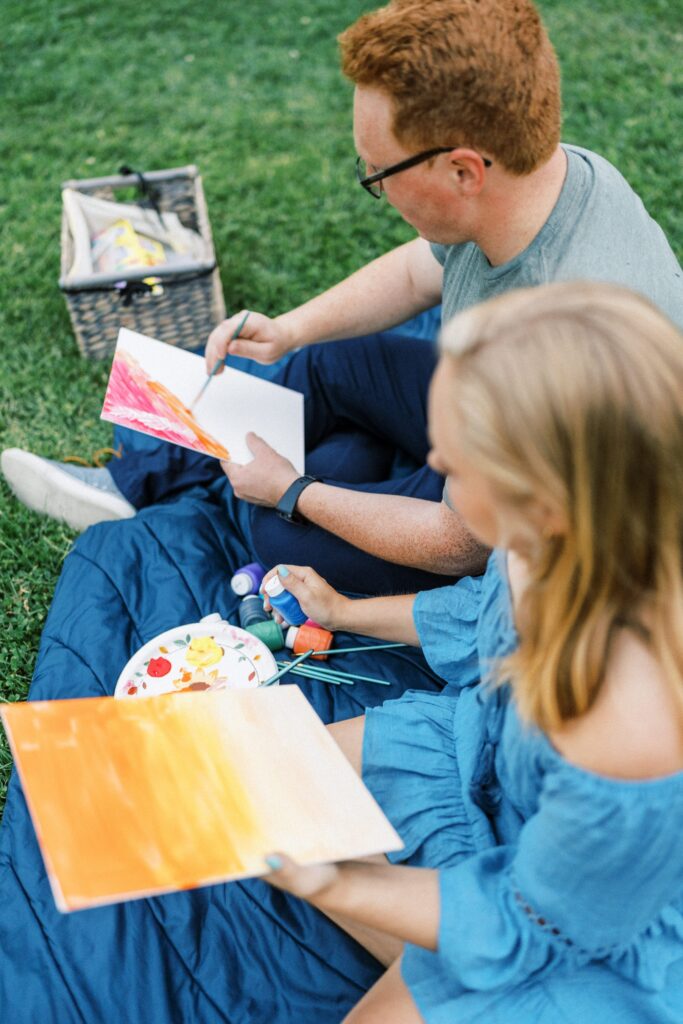
Dense Composition
Dense composition is a style that relies on both the couple and the photographer to create images that feel full, layered, and dynamic. This style features overlapping elements, multiple points of interest, and a sense of organized chaos, drawing the eye through the frame in an intentional way. It works best in visually rich settings, such as packed dance floors, crowded getting-ready rooms, or receptions with layered décor and textures. When done well, dense composition results in photos that feel immersive and cinematic, capturing not just the couple but the energy, atmosphere, and emotions of the entire celebration.
Photo Creds: Emily Hogan Visuals Waiting on images
Clean Composition
Put plainly, the opposite of dense. This is a minimalistic approach that focuses on simplicity, balance, and intentional framing. This style relies on negative space, strong lines, and uncluttered backgrounds to draw attention without distractions. While a photographer can create clean compositions through framing and positioning, it also depends on the setting—wide-open landscapes, minimalistic venues, or carefully styled details enhance the effect. This approach often results in timeless, elegant images that feel refined and artful, emphasizing the beauty of the moment without other elements competing for attention.
Photo Cred: Brennan Rieder Photography
Thanks for reading! While this guide covers the main wedding photography styles, one thing I didn’t dive into is reception lighting and flash styles—another important factor that can dramatically affect the look and feel of your final gallery. If you want to make sure your reception photos match your vision, I’ve written a separate guide on reception lighting and flash styles that you can check out HERE.
